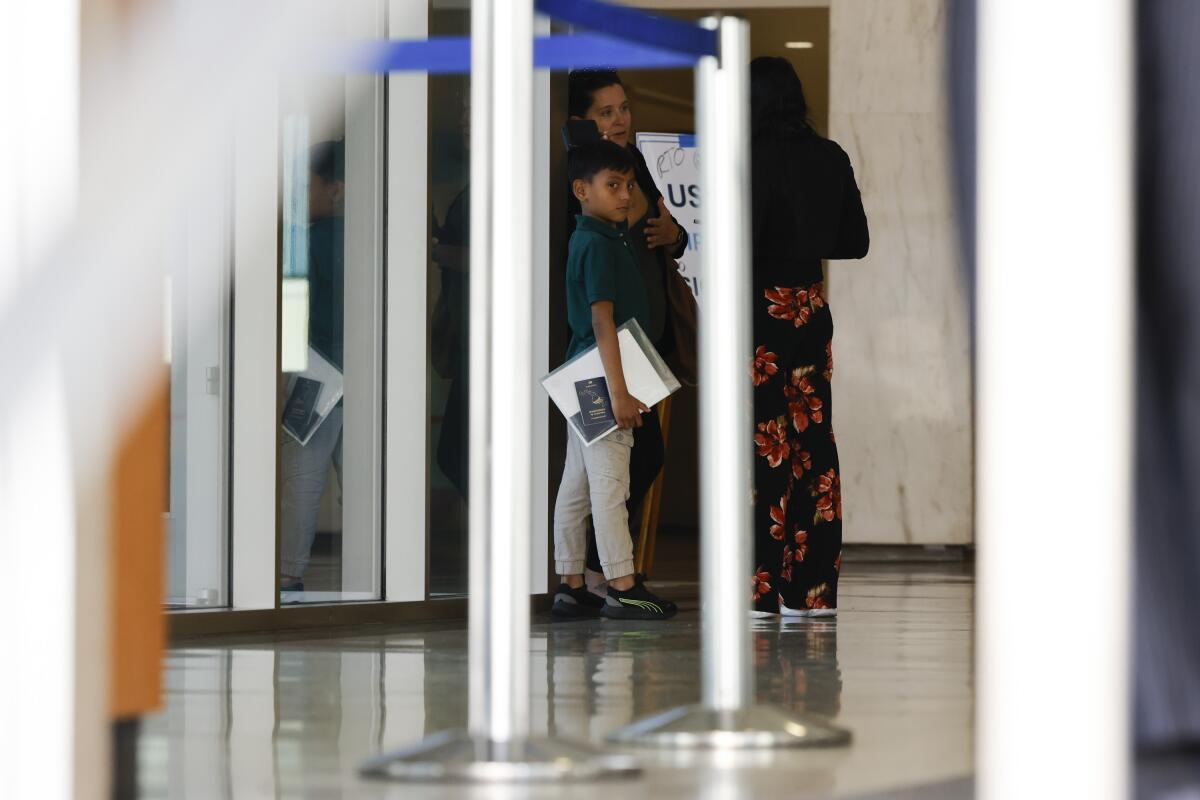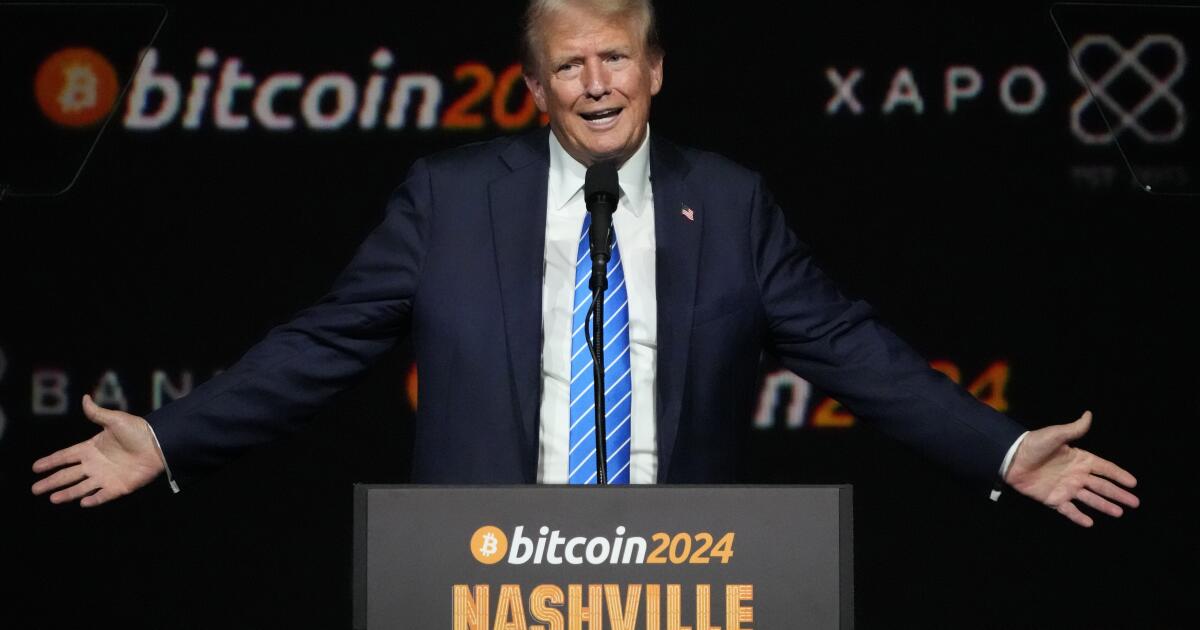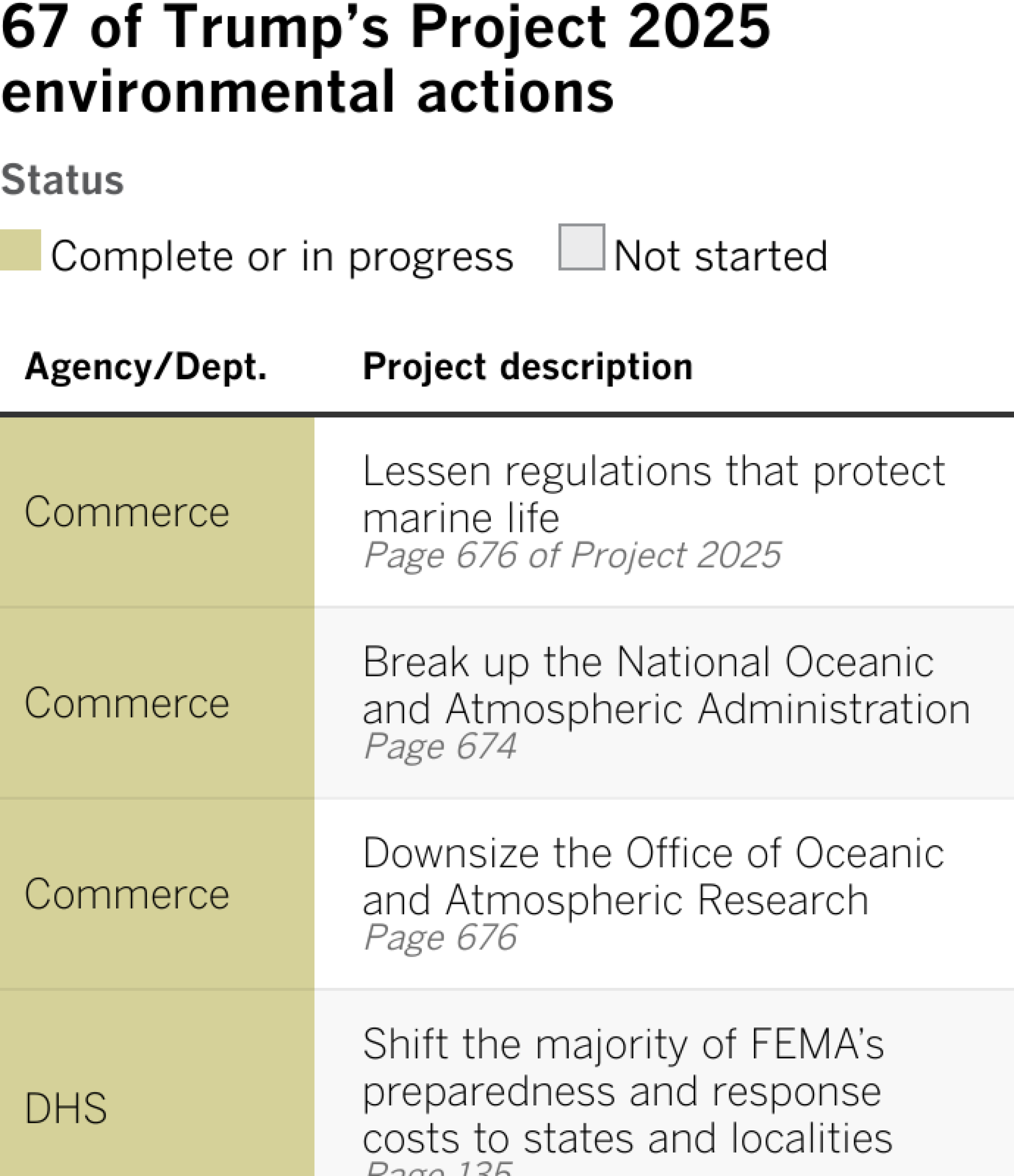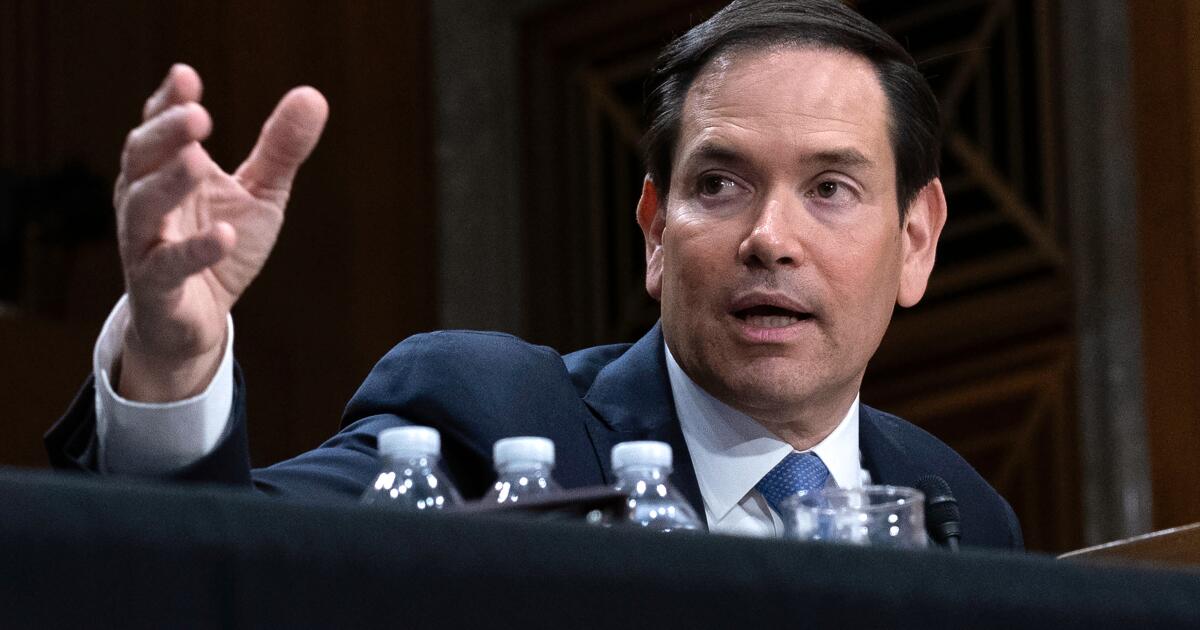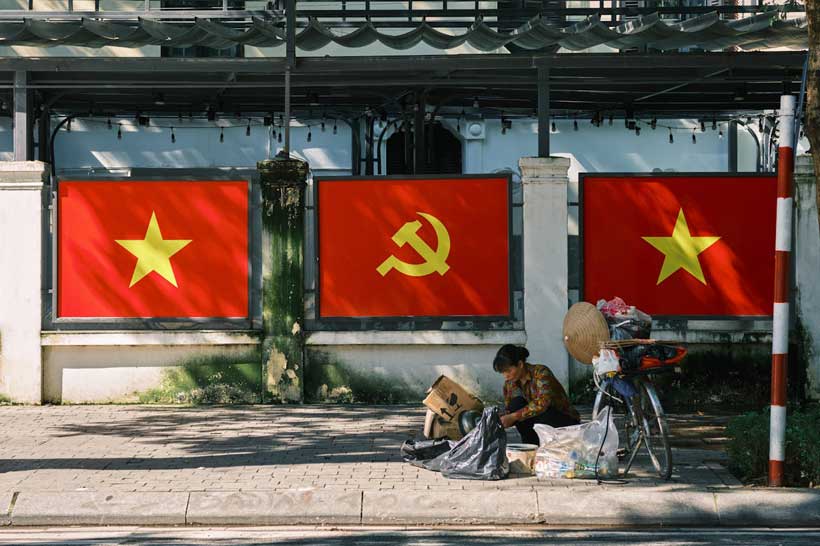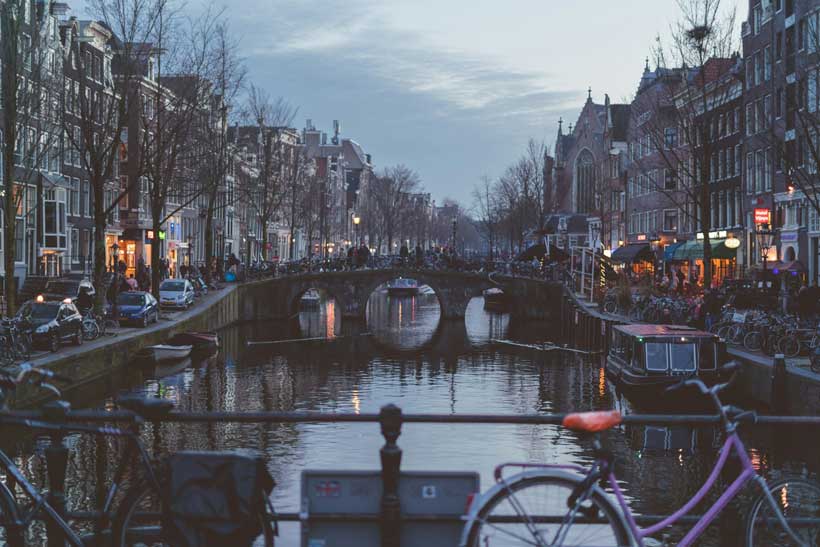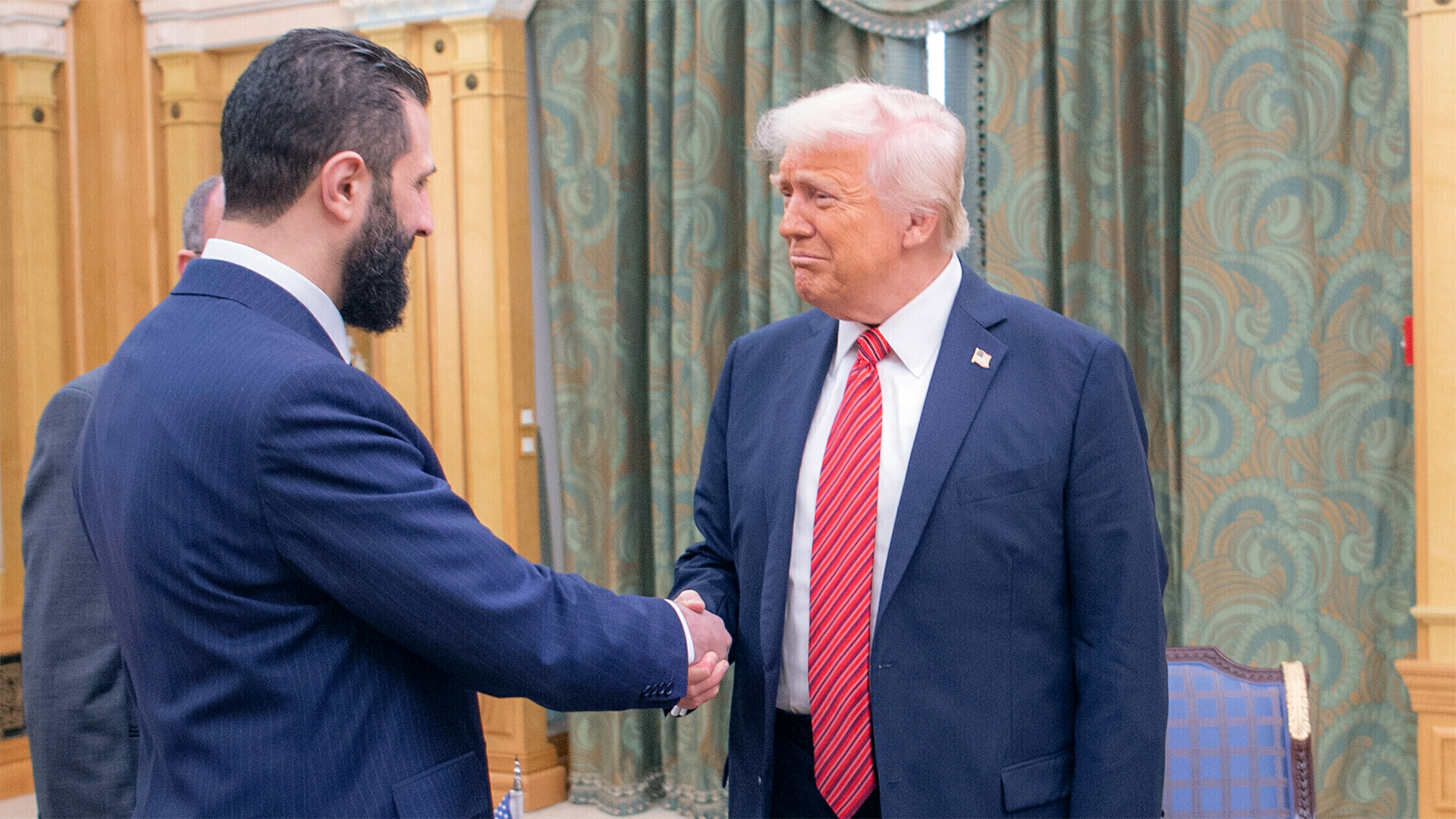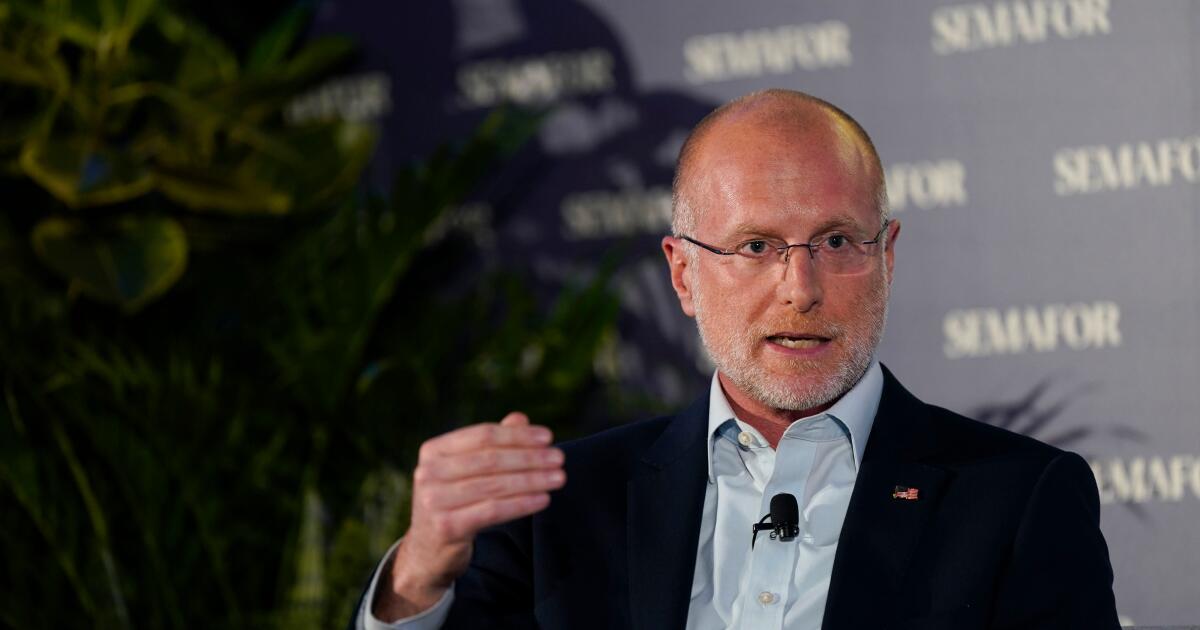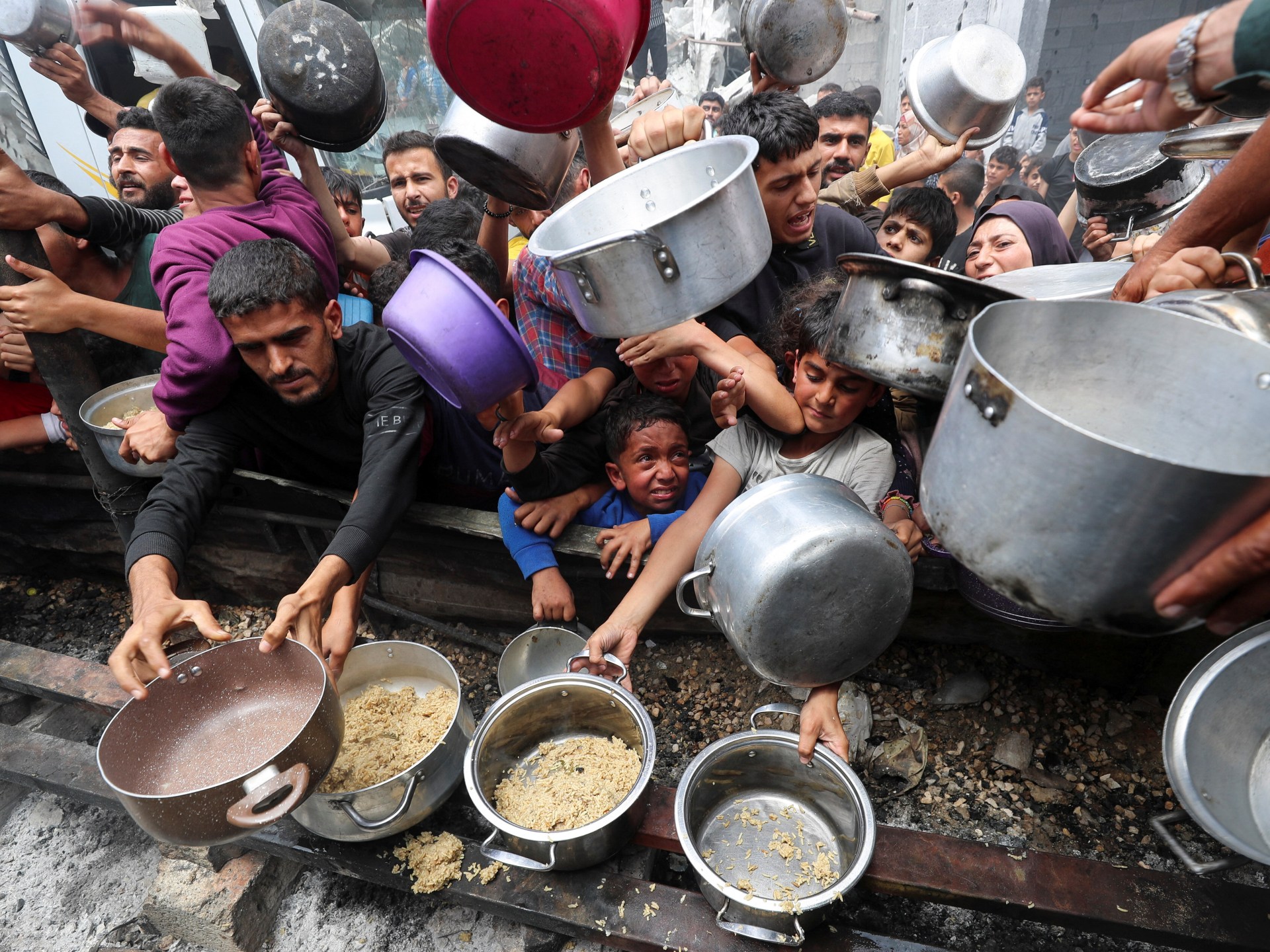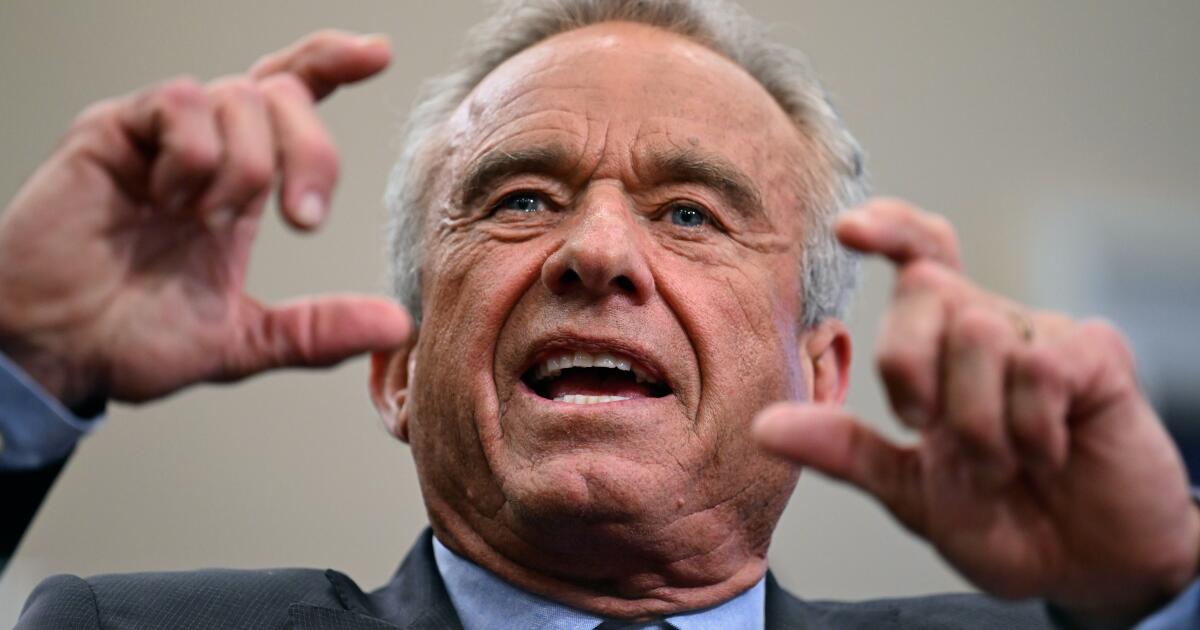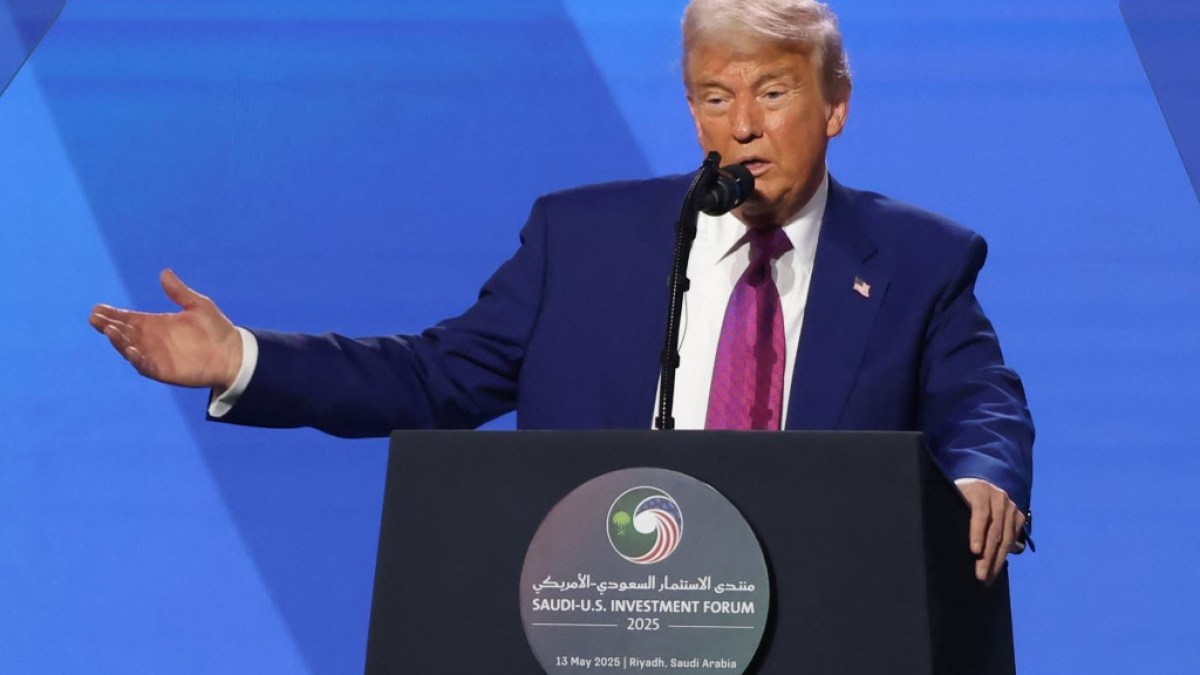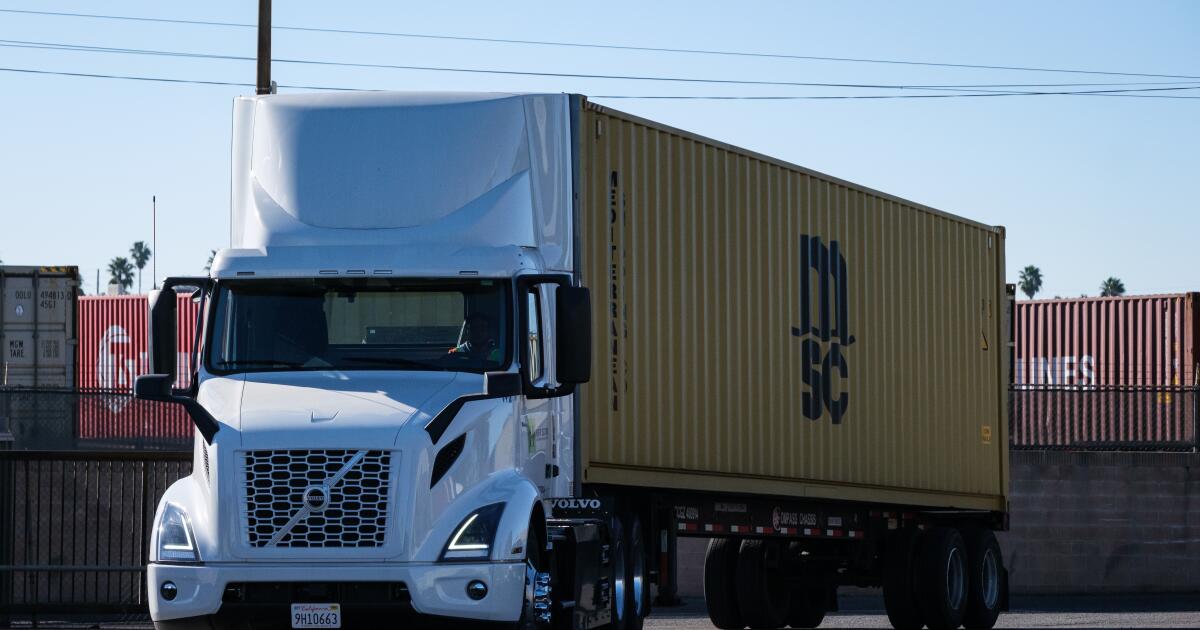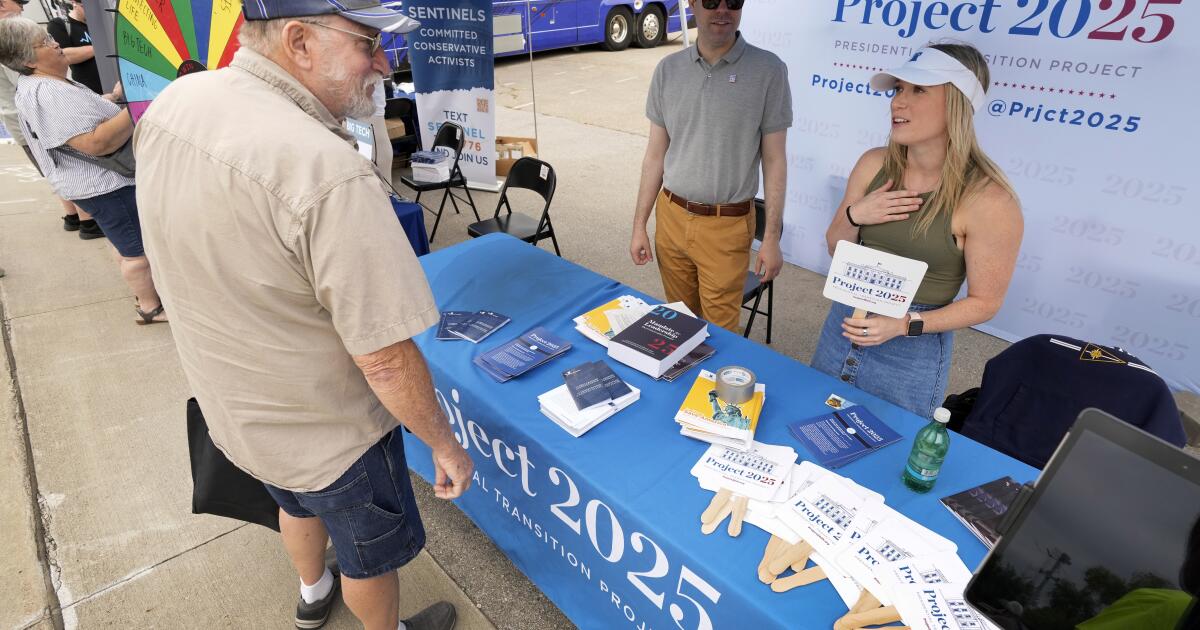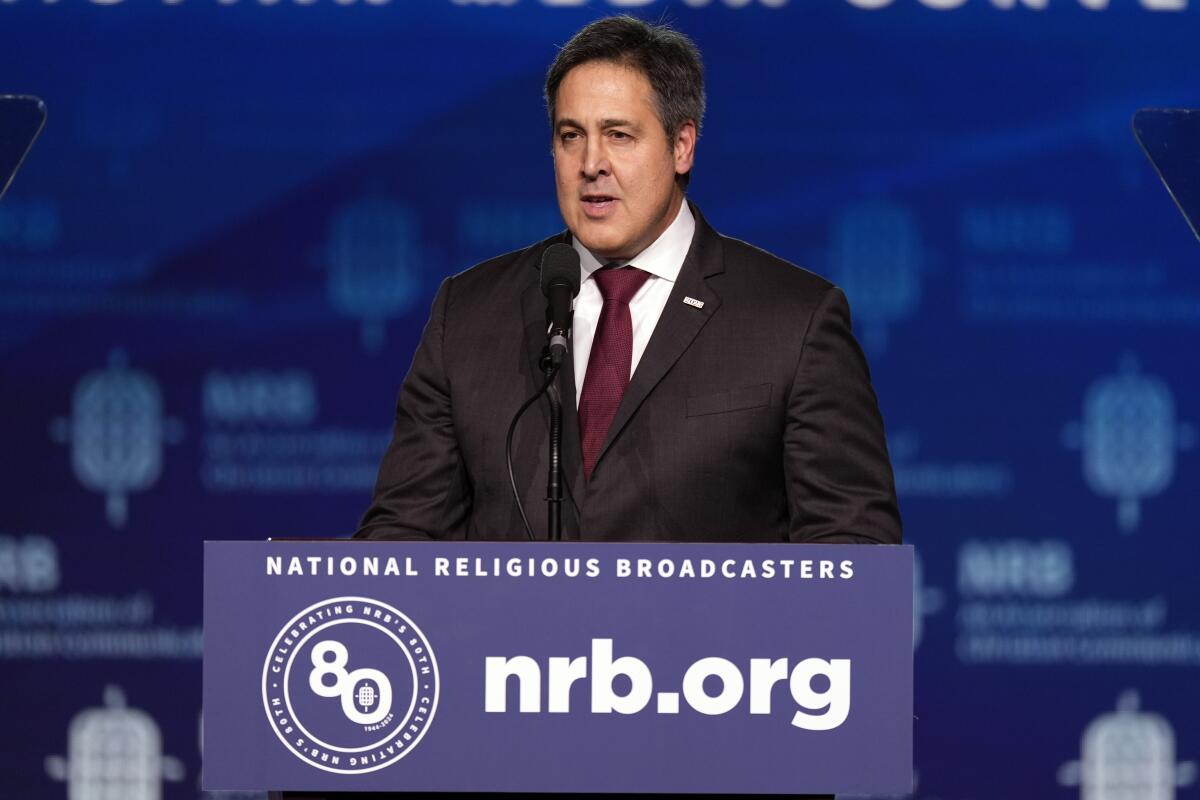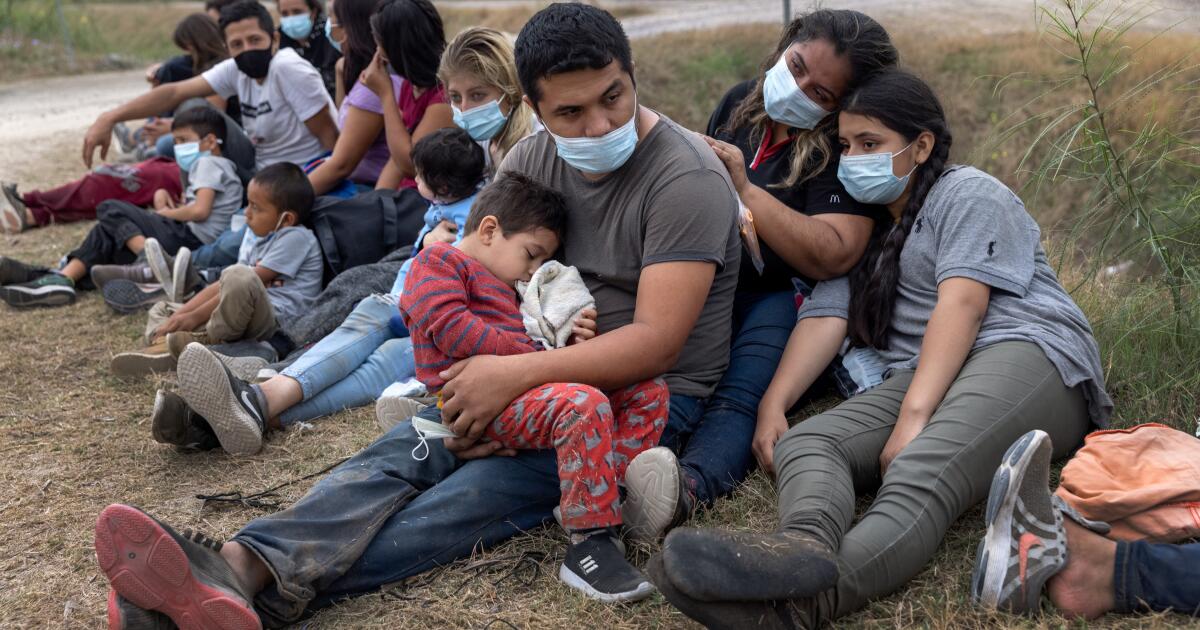Father ripped from family as agents target immigration courts
The man just had his immigration case dismissed and his wife and 8-year-old son were trailing behind him when agents surrounded, then handcuffed him outside the downtown Los Angeles courtroom.
Erick Eduardo Fonseca Solorzano stood speechless. His wife trembled in panic. The federal agents explained in Spanish that he would be put into expedited removal proceedings.
Just moments earlier on Friday, Judge Peter A. Kim had issued a dismissal of his deportation case. Now his son watched in wide-eyed disbelief as agents quickly shuffled him to a service elevator — and he was gone. The boy was silent, sticking close by his mother, tears welling.
“This kid will be traumatized for life,” said Lindsay Toczylowski, chief executive and co-founder of Immigrant Defenders Law Center, who reached out to the family to help them with their case.
A child who’s father was detained by ICE after a court hearing stands inside the North Los Angeles Street Immigration Court on Friday.
(Carlin Stiehl/Los Angeles Times)
Similar scenes are taking place across the country as the Department of Homeland Security asks to dismiss its own deportation cases, after which agents promptly arrest the immigrants to pursue expedited removals, which require no hearings before a judge.
The courthouse arrests escalate the Trump administration’s efforts to speed up deportations. Migrants who can’t prove they have been in the U.S. for more than two years are eligible to be deported without a judicial hearing. Historically, these expedited removals were done only at the border, but the administration has sought to expand their use.
The policies are being challenged in court.
“Secretary [Kristi] Noem is reversing Biden’s catch-and-release policy that allowed millions of unvetted illegal aliens to be let loose on American streets,” said a senior official from the Department of Homeland Security.
The official said most immigrants who entered the U.S. illegally within the last two years “are subject to expedited removals.” But he noted that if they have a valid credible fear claim, as required by law, they will continue in immigration proceedings.
Toczylowski said it was Fonseca Solorzano’s first appearance in court. Like many of those apprehended this week, Fonseca Solorzano arrived in the United States from Honduras via CPB One, an application set up during the Biden administration that provided asylum seekers a way to enter the country legally after going through a background check.
Erendira De La Riva, left, Sarai De La Riva and Maria Elena De La Riva speak to the media Friday about the status of Alvaro De La Riva, who was detained the previous night by ICE and taken to the North Los Angeles Street Immigration Court.
(Carlin Stiehl/Los Angeles Times)
More than 900,000 people were allowed in the country on immigration parole under the app, starting in January 2023. The Trump administration has turned the tool into a self-deportation app.
“We are punishing the people who are following the rules, who are doing what the government asks them to do,” Toczylowski said.
“I think that this practice certainly seemed to have shaken up some of the court staff, because it’s so unusual and because it’s such bad policy to be doing this, considering who it targets and the ripple effects that it will have, it’ll cause people to be afraid to come to court.”
A Times reporter witnessed three arrests on Friday in the windowless court hallways on the eighth floor of the Federal Building downtown. An agent in plain clothes in the courtroom came out to signal to agents in the hallway, one wearing a red flannel shirt, when an immigrant subject to detainment was about to exit.
“No, please,” cried Gabby Gaitan, as half a dozen agents swarmed her boyfriend and handcuffed him. His manila folder of documents spilled onto the floor. She crumpled to the ground in tears. “Where are they taking him?”
Richard Pulido, a 25-year-old Venezuelan, had arrived at the border last fall and was appearing for the first time, she said. He had been scared about attending the court hearing, but she told him missing it would make his situation worse.
Gaitan said Pulido came to the U.S. last September after fleeing violence in his home country.
An immigrant from Kazakhstan, who asked the judge not to dismiss his case without success, walked out of the courtroom. On a bench across from the doors, two immigration agents nodded at each other and one mouthed, “Let’s go.”
They stood quickly and called out to the man. They directed him off to the side and behind doors that led to a service elevator. He looked defeated, head bowed, as they searched him, handcuffed him and shuffled him into the service elevator.
Lawyers, who were at courthouses in Santa Ana and Los Angeles this week, say it appears that the effort was highly coordinated between Homeland Security lawyers and federal agents. Families and lawyers have described similar accounts in Miami, Seattle, New York, San Diego, Chicago and elsewhere.
During the hearing for Pulido, Homeland Security lawyer Carolyn Marie Thompkins explicitly stated why she was asking to dismiss the removal proceedings.
“The government intends to pursue expedited removal in this case,” she said. Pulido appeared confused as to what a dismissal would mean and asked the judge for clarity. Pulido opposed having his case dropped.
“I feel that I can contribute a lot to this country,” he said.
Kim said it was not enough and dismissed the case.
People line up outside the North Los Angeles Street Immigration Court before hearings on Friday.
(Carlin Stiehl/Los Angeles Times)
The courthouse arrests have frustrated immigrant rights advocates who say the rules of the game are changing daily for migrants trying to work within the system.
“Immigration court should be a place where people go to present their claims for relief, have them assessed, get an up or down on whether they can stay and have that done in a way that affords them due process,” said Talia Inlender, deputy director at the Center for Immigration Law and Policy at UCLA School of Law School. “That is being ripped away sort of at every turn.
“It’s another attempt by the Trump administration to stoke fear in the community. And it specifically appears to be targeting people who are doing the right thing, following exactly what the government has asked them to do,” she said.
